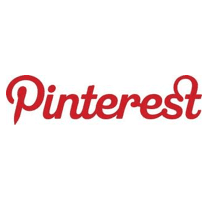From an eCommerce point of view, Pinterest should be recognised as a great source of free marketing. Here’s a how-guide for making it work for your small business.
Pinterest is a visually-driven website, where people can “pin” pictures or videos of their favorite things/places/people on a virtual pinboard. As a user, you can categories these pinned pictures into multiple boards, all with their own theme. When a picture is then pinned, a short description can be written about it, and the picture is automatically linked to the place from which it came.
The ease with which you can post pictures, coupled with the social nature of the site (which uses Twitter-like “following” to watch pins from other users) makes it a great way for you, as an eCommerce store owner, to get your products promoted.
When you first get into Pinterest (it is a invite-only service right now, but after I requested an invite, I got in fairly quickly), you’re asked to specify a few interests of yours, and then you’ll automatically follow prominent members with those same interests. It’s a great way to start buying into the service.
Pinterest will also start you off with five common board themes (which you can change or delete, if you want) to start pinning your favorite things. There’s even a handy bookmark you can put in your browser’s link bar that will automatically start the pinning process without having to log-in to Pinterest if you’re on another website.
Pinterest can directly link with your Twitter and Facebook accounts, requiring you to log-in to one or the other when you first create your account. This means that pinning a product can be shared exponentially through all three avenues almost instantaneously.
How about Pinterest for eCommerce?
From an eCommerce point of view, Pinterest should be recognised as a great source of free marketing. The only thing it requires of you is to pin your products, or have your products be pinned. Since it is a picture or video based board, you’ll want to make sure that your products have good pictures. The more enticing and interesting a picture is, the more likely people on Pinterest are to look at it.
Once it gets discovered, however, the ease in which the product can be shared is Pinterest’s greatest selling point.
Past that, the already booming user base of 7.2 million users (over 328 percent growth from last year alone), while still being invite-only, should let you know that it’s becoming a huge traffic source for people sharing their favorite products. It’s already passed the referral traffic from YouTube, Google+ and LinkedIn, according to Shareaholic’s January 2012 Referral Traffic Report.
While Facebook still reigns in referrals, Pinterest’s ability to post directly to social media giant makes it a strong contender for you to reach as many consumers as possible.
Above all, Pintrest is an easy way for people to share what they love, including your products and others. Boards are about a way of life rather than a specific brand, and Pinterest wants to keep it that way.
So, at the very least, allow people to pin your products – it’s no extra work from you and you get free marketing. You can see that we’re in the process of rolling out a BigCommerce update that includes Pinterest integration by reading this post on our blog from last week.
After people start pinning your products, move on to create your own Pinterest board and include both your products and others from companies like yours. You can then share your board from your BigCommerce site if you like.
Pinterest is becoming a community, not just a repository of pictures, and communities are a place to start building your brand and to become known as a regular contributor.
Once you get started, you can also use Google Analytics to track your pins because of the unique URLs Pinterest gives each pin. You can even go to http://www.pintrest.com/source/yourdomain.com (replacing the last part with your actual domain), which will show any pins that are sourced from your domain.
Pinterest might even give you new ideas for how to market your store to get higher conversion rates and generate more revenue.
– This post first appeared on the BigCommerce blog and is written by Erika Jarvi, a ninja on the BigCommerce support team.

